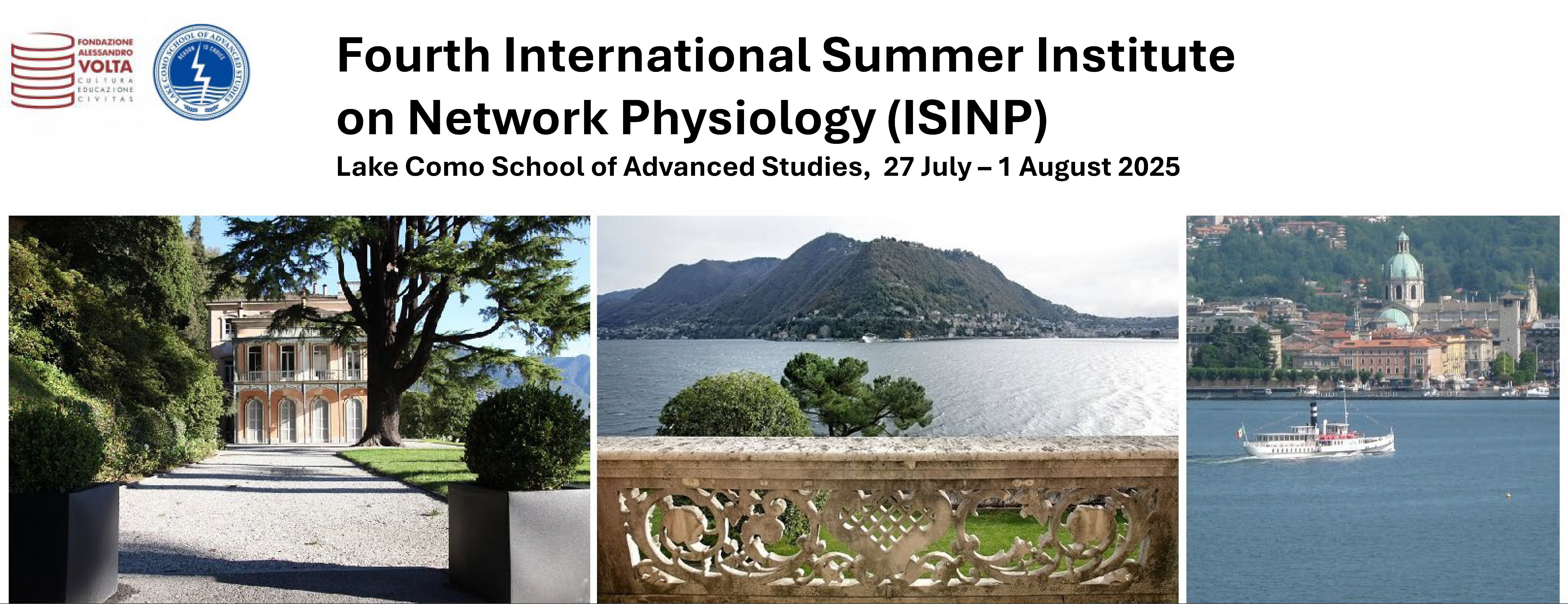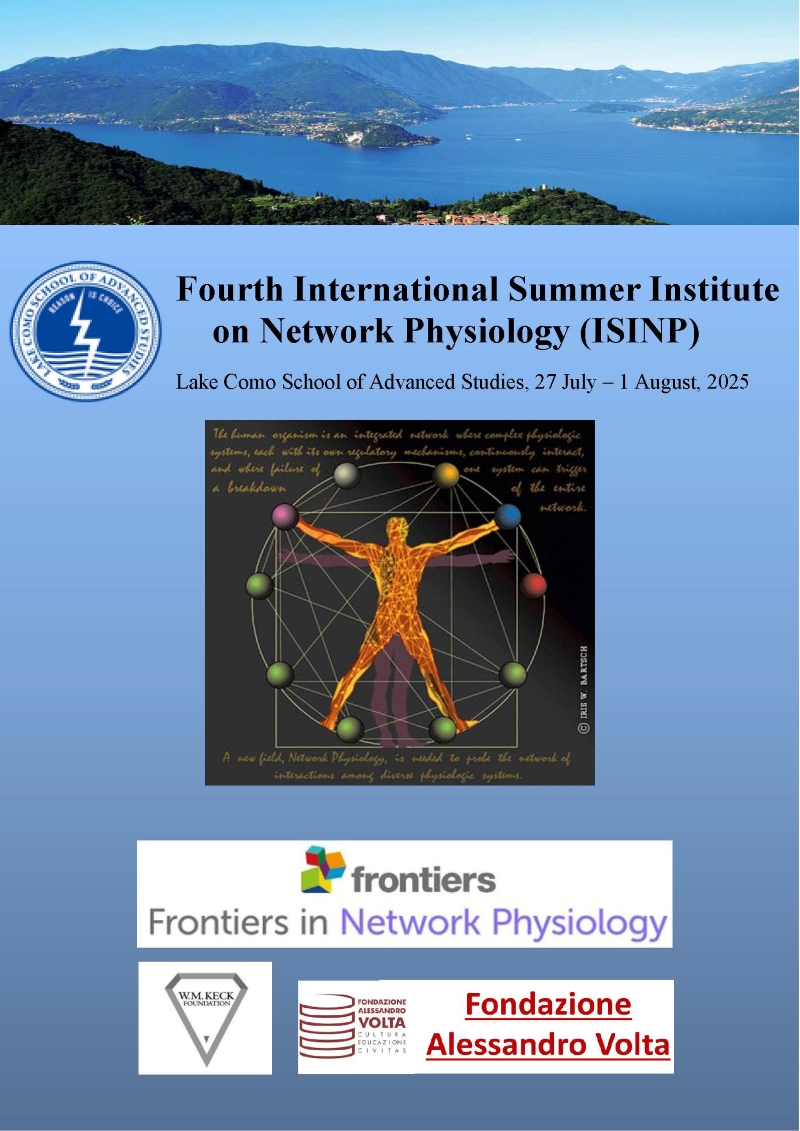Program
ISINP-2025 is part of the international scientific events series in celebration of the 200th anniversary and legacy of Alessandro Volta
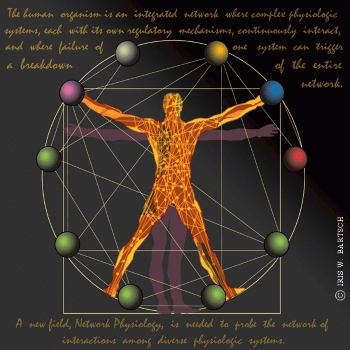
ISINP-2025 is supported by:


SCIENTIFIC PROGRAM
(download here ISINP-2025-Program.pdf)
ISINP-2025 TIME TABLE
(download here ISINP-2025-Time-Table)
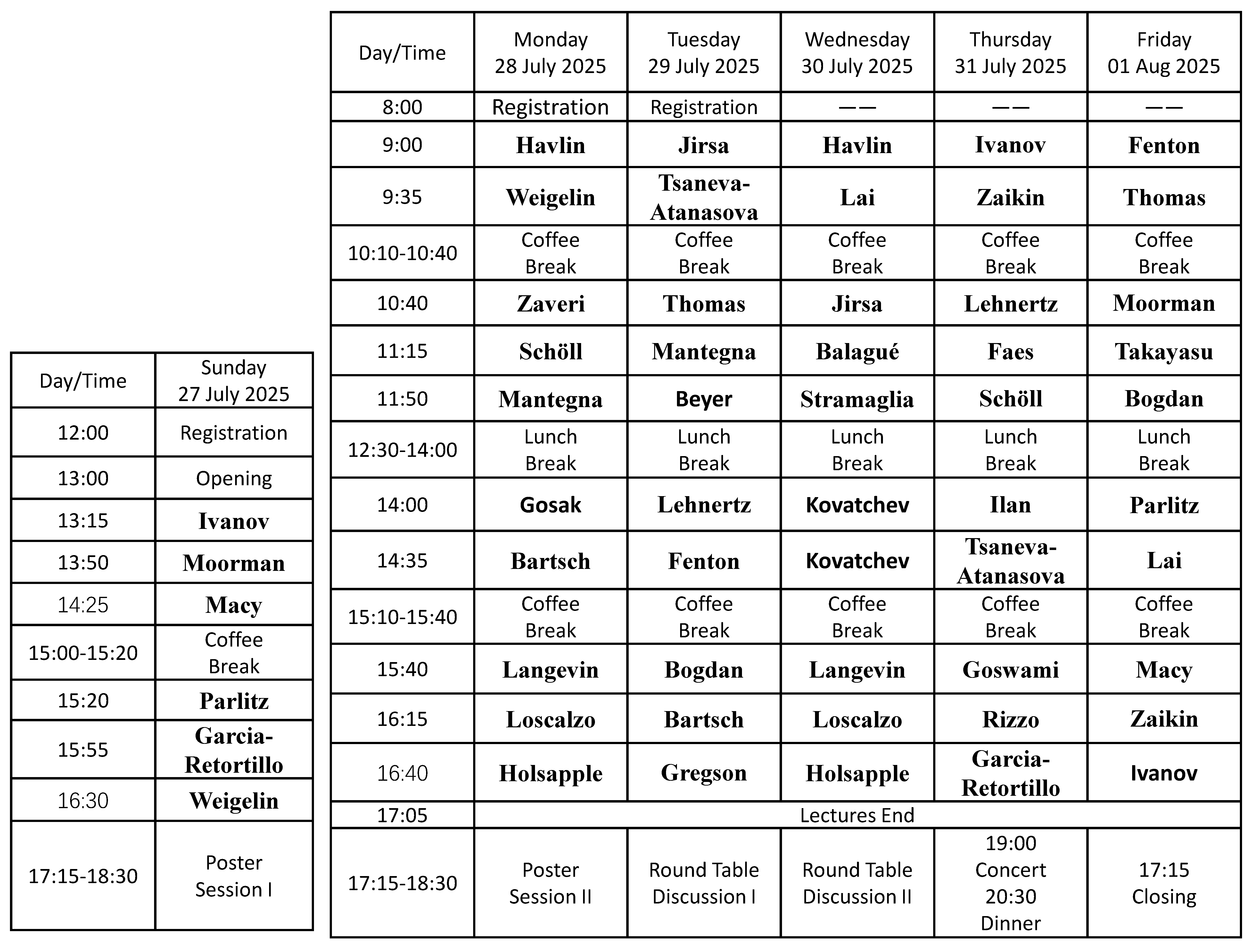
Session Chairs
| Plamen Ch. Ivanov | 13:00 – 17:00 | Sunday | 27 July, 2025 |
| Ulrich Parlitz | 9:00 – 12:30 | Monday | 28 July, 2025 |
| Plamen Ch. Ivanov | 14:00 – 17:05 | Monday | 28 July, 2025 |
| Paul Bogdan | 9:00 – 12:30 | Tuesday | 29 July, 2025 |
| Alexey Zaikin | 14:00 – 17:05 | Tuesday | 29 July, 2025 |
| Eckehard Schöll | 9:00 – 12:30 | Wednesday | 30 July, 2025 |
| Plamen Ch. Ivanov | 14:00 – 17:05 | Wednesday | 30 July, 2025 |
| Sebastiano Stramaglia | 9:00 – 12:30 | Thursday | 31 July, 2025 |
| Luca Faes | 14:00 – 17:05 | Thursday | 31 July, 2025 |
| Ying-Cheng Lai | 9:00 – 12:30 | Friday | 01 August, 2025 |
| Flavio H. Fenton | 14:00 – 17:05 | Friday | 01 August, 2025 |
Poster Awards Committee
Krasimira Tsaneva-Antanasova, Yaron Ilan, Alan Macy, Ulrich Parlitz, Bettina Weigelin
ROUND TABLE DISCUSSION:
Round Table I
Krasimira Tsaneva-Atanasova, Ulrich Parlitz, J. Randall Moorman, Shlomo Havlin, Alan Macy,
Robert J. Thomas, Viktor Jirsa, Sallie Gregson
Round Table II
Eckehard Schöll, Klaus Lehnertz, Hitten P. Zaveri, Yaron Ilan, Rosario Mantegna, Luca Faes, Paul Bogdan,
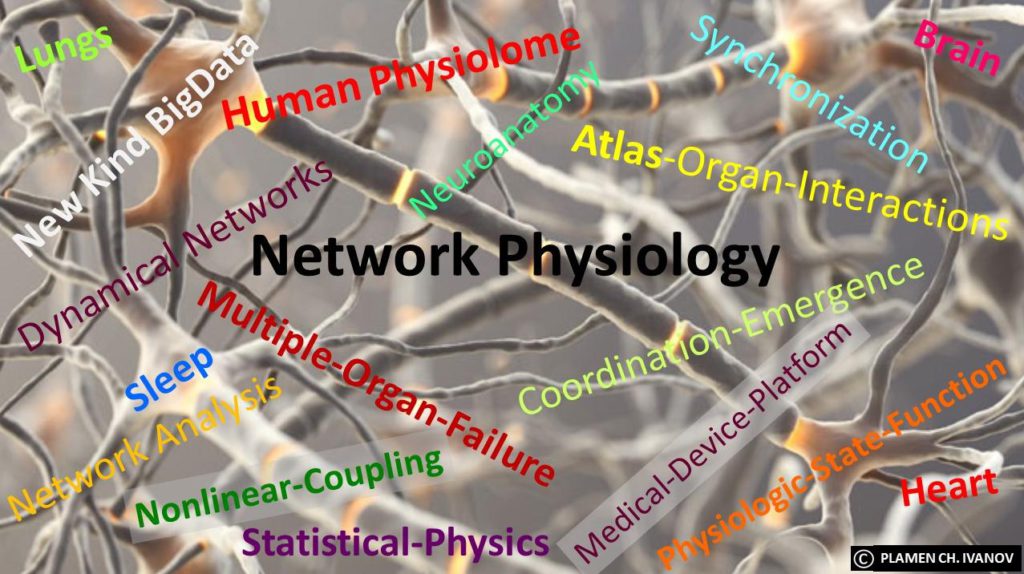
LECTURE TITLES
Krasimira Tsaneva-Atanasova, Ph.D., Professor
University of Exeter, UK
1. Neuroendocrine Network Dynamics I: Mechanisms and Models of Physiological Regulation
2. Neuroendocrine Network Dynamics II: Clinical Implication
Natàlia Balague, Ph.D., Professor
INEFC, University of Barcelona, Barcelona, Spain
1. Network Physiology reveals sex differences in response to exercise with implications for health and performance
Ronny P. Bartsch, Ph.D., Associate Professor
Department of Physics, Bar-llan University, Israel
1. Coexisting forms of coupling and networks of physiological interactions
2. Reconstructing causal networks in physiology
Thomas Beyer, Ph.D., Professor
Center for Medical Physics and Biomedical Engineering,
Medical University of Vienna, Vienna, Austria
1. Dual-modality PET-based whole-body imaging for systemic phenotyping
Paul Bogdan, Ph.D., Associate Professor
Ming Hsieh Department of Electrical and Computer Engineering,
University of Southern California, USA
1. Artificial intelligence for network physiology
2. Network physiology-inspired theoretical foundations of neuroAI: challenges and a Gedanken modeling framework of living neuronal networks dynamics
Luca Faes, Ph.D., Professor
Department of Engineering, University of Palermo, Italy
1. Measuring integration and emergence in dynamic physiological networks: an information-theoretic approach
Flavio H. Fenton, Ph.D., Professor
School of Physics, Georgia Tech, USA
1. Simultaneous optical mapping of voltage and calcium dynamics in myocardial cell networks of whole ex-vivo human explanted hearts to investigate emergent behavior in arrhythmias
2. Spatiotemporal synchronization in networks of cardiac cells during arrhythmias and defibrillation
Susanna Gordleeva, Ph.D., Professor
Department of Neurotechnologies, Neuroscience Research Institute,
Lobachevsky State University, Russia
1. Astrocytic modulation of neural network signaling.
Marko Gosak, Ph.D., Associate Professor
Faculty of Medicine, Faculty of Natural Sciences and Mathematics,
University of Maribor, Maribor, Slovenia
1. From Isles of Königsberg to Islets of Langerhans: Assessing Multicellular Activity Through the Lens of Network Science
Nandu Goswami, M.D., Ph.D., Professor
Center for Space and Aviation Health, Mohammed Bin Rashid University of Medicine, UAE
Gravitational Physiology and Medicine Research Unit, Medical University of Graz, Austria
1. Risk of thromboembolism in space: system interactions, challenges and perspectives
Sallie Gregson, B.A., Journal Manager
Frontiers Media SA, Lausanne, Switzerland
1. Introducing Frontiers in Network Physiology: Bridging Disciplines to Understand Complex Physiological Systems and their Interactions.
Shlomo Havlin, Ph.D., Professor
Department of Physics, Bar-llan University, Israel
1. Theory of interdependent networks: applications in physics and physiology
2. Time persistence of brain networks
James W. Holsapple, M.D., Professor
Department of Neurological Surgery, Boston University School of Medicine
Neurological Surgery, Boston Medical Center, USA
1. Network physiology: an emerging tool in the clinical neurosciences?
2. Dynamic Networks of Cortical Rhythms Across Sleep-Wake Cycles in Rat Model of Insomnia and Human Subjects With Parkinson’s Disease
Yaron Ilan, M.D., Professor
Department of Medicine, Hebrew University, Israel
Department of Medicine, Hadassah Medical Center, Israel
1. Harnessing Nonlinearity and Biological Noise to Mitigate Malfunctions in Biological Systems Effectively
Plamen Ch. Ivanov, Ph.D., Professor
Keck Laboratory for Network Physiology, Department of Physics, Boston University, USA
1. The new field of Network Physiology: Building the Human Physiolome
2. Physiologic network interactions: Novel hallmark of physiological state and function
Viktor Jirsa, Ph.D., Professor
CNRS, France
Institut de Neurosciences des Systèmes, Aix-Marseille University, France
1. On the space-time structure of large-scale brain networks and their dynamics
2. Principles and operation of virtual brain twins
Boris P. Kovatchev, Ph.D., Professor
School of Medicine, University of Virginia, USA
1. How in silico models of the human glucose-insulin metabolic network across organ systems made animal trials obsolete
2. Controlling the Human Glucose-Insulin Metabolic Network: the Neural Network AI artificial pancreas and the contemporary treatment of diabetes
Ying-Cheng Lai, Ph.D., Professor
School of Electrical, Computer and Energy Engineering, Arizona State University, USA
Department of Physics, Arizona State University, USA
1. Reservoir computing and dynamical networks: recent results and open questions
2. Controllability of nonlinear dynamical networks
Helene M. Langevin, M. D.,
National Center for Complementary and Integrative Health (NCCIH), Bethesda, Maryland, USA
1. Connective tissue as whole-body physiological system
2. Viscerosomatic connection through the interstitium: clues from acupuncture
Klaus Lehnertz, Ph.D., Professor
Department of Epileptology at Bonn University Medical Center, Germany
1. Time-evolving functional brain networks – insights from epilepsy
Joseph Loscalzo, M.D., Professor
Department of Medicine, Brigham and Women’s Hospital, Harvard Medical School, USA
1. Robust Multiomics and Phenomics in Network-based Disease Subtyping
2. Network Medicine: New Approach to the Biological Basis of Disease and Therapeutics
Alan Macy, MSEE
Biopac Systems, Inc., Santa Barbara, USA
1. Advancing network physiology: challenges and opportunities in developing integrated medical device platforms for high-frequency multisystem monitoring
2. Affective States, Stacked Chaotic Oscillators and the Autonomic Nervous System
Rosario Mantegna, Ph.D., Professor
Department of Applied Physics, University of Palermo, Italy
Complexity Science Hub, Austria
1. Comorbidity networks
2. Clustering and dismantling of comorbidity networks
Randall Moorman, M.D., Professor
Department of Medicine, Physiology, Biomedical Engineering, University of Virginia, USA
1. How can the study of network physiology improve patient care
2. How anti-aircraft gunnery helps the network physiologist
Ulrich Parlitz, Ph.D., Professor
Max Planck Research Group Biomedical Physics,
Max Planck Institute for Dynamics and Self-Organization, German
1. Challenges of the complex dynamics of cardiomyocyte networks in heart tissue
2. Data driven modelling, control, and dynamical networks
Sergi Garcia-Retortillo, Ph.D., Assistant Professor
College of Nursing, University of Central Florida, USA
Complex Systems in Sport Research Group, University of Barcelona, Spain
1. Network physiology of exercise: inter-muscular networks in rest, exercise, fatigue and aging
2. Networks of cardio-muscular coordination – evolution with exercise and fatigue
Rossella Rizzo, Ph.D., Assistant Professor
Department of Engineering, University of Palermo, Italy
1. Network physiology of cortico-muscular interactions: mathematical framework and implications for physiological regulation, sleep and neurodegenerative disorders
Eckehard Schöll, Ph.D., Professor
Department of Physics, Berlin Institute of Technology, Germany
Bernstein Center for Computational Neuroscience Berlin, Germany
1. Partial synchronization patterns in complex networks – interplay of dynamics, time delay, and network topology
2. Functional modelling of tumor disease and sepsis by adaptive multilayer network
Sebastiano Stramaglia, Ph.D., Professor
Dipartimento Interateneo di Fisica, Università degli Studi di Bari Aldo Moro, Italy
1. Higher order interactions, in physiological networks, assessed by gradients of O-information and decomposition of the transfer entropy.
Misako Takayasu, Ph.D., Professor
School of Computing, Institute of Science Tokyo, Japan
1. Analysis of high-resolution metagenomic time series and modeling of the microbiome interaction network
Robert J. Thomas, M.D., M.M.Sc, Professor
Division of Pulmonary, Critical Care & Sleep, Harvard Medical School
Beth Israel Deaconess Medical Center, USA
1. Sleep as a multi-component multi-level networked state
2. Sleep transitions and networks – onset, offset, arousals and awakenings
Bettina Weigelin, M.D., Professor
Department of Preclinical Imaging and Radiopharmacy,
Eberhard Karls University of Tübingen, Germany
1. Multiscale immuno-imaging and network physiology: from immune cell function to systemic immune response in cancer
2. Thermal tuning of immunity: Fever-range temperature modulation of cancer immunity and network physiology
Alexey Zaikin, Ph.D., Professor
Department of Mathematics, University College London, UK
EGA Institute for Women’s Health, University College London, UK
1. Analysis of multidimensional medical data with synolitic networks
2. Emerging of intelligence in complex physiological networks
Hitten P. Zaveri, Ph.D., Associate Professor
Department of Neurology, Yale School of Medicine, USA
1. Understanding the structure-function relationship in the human brain
